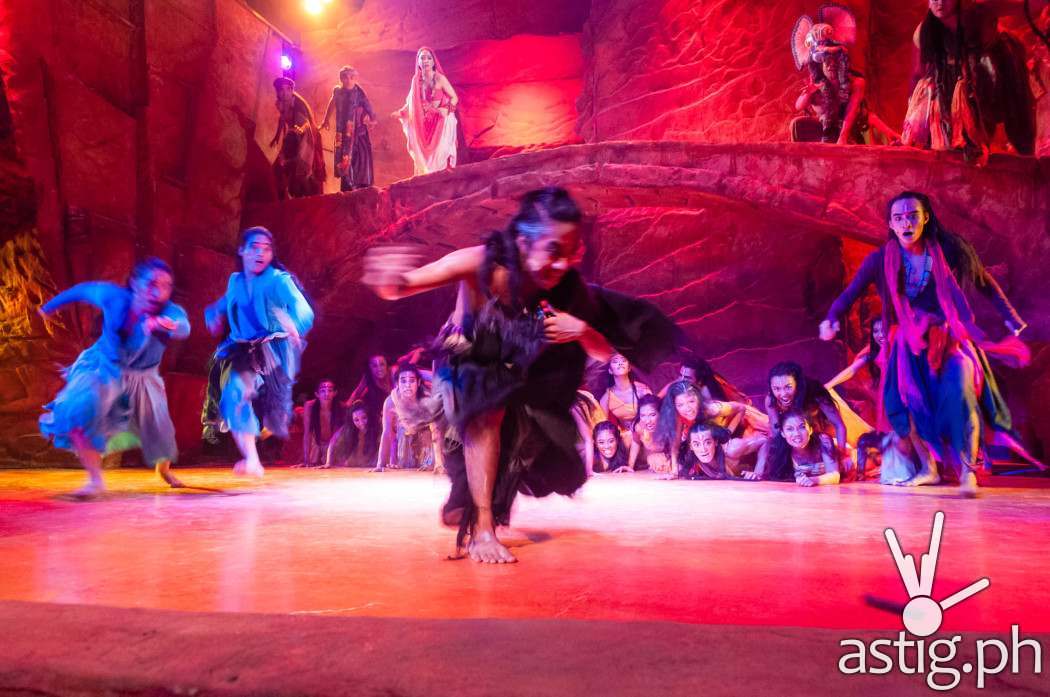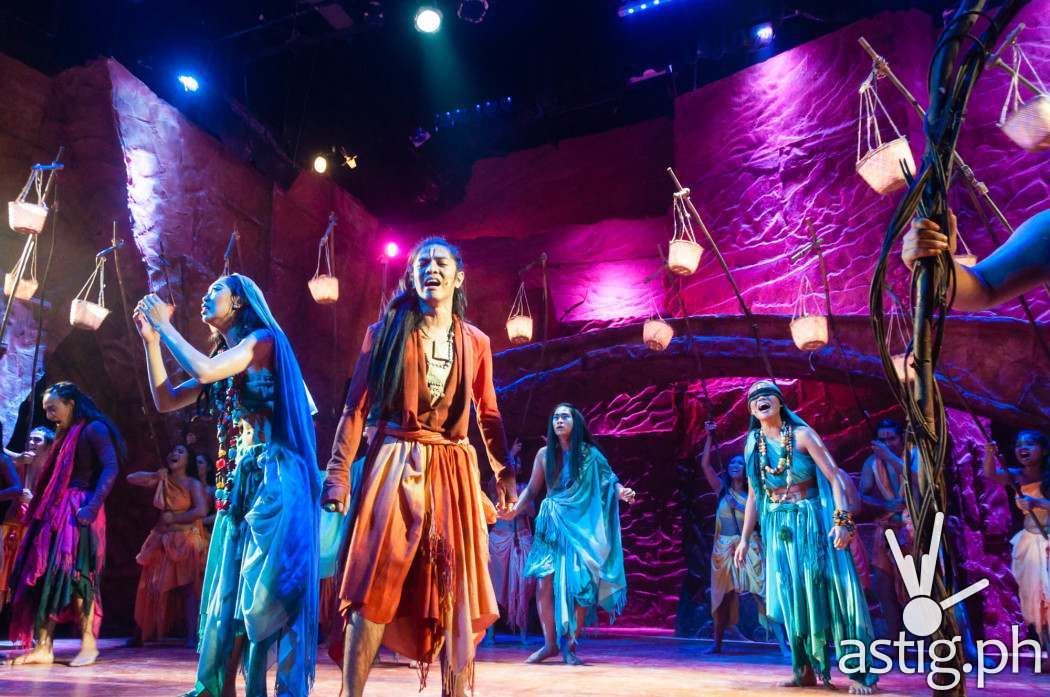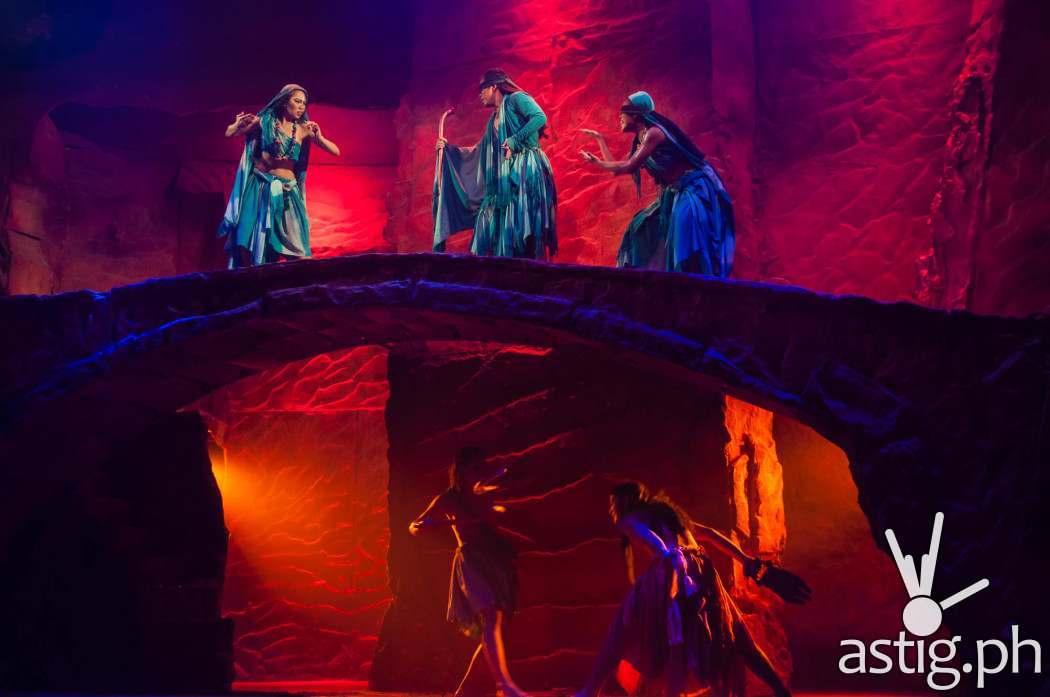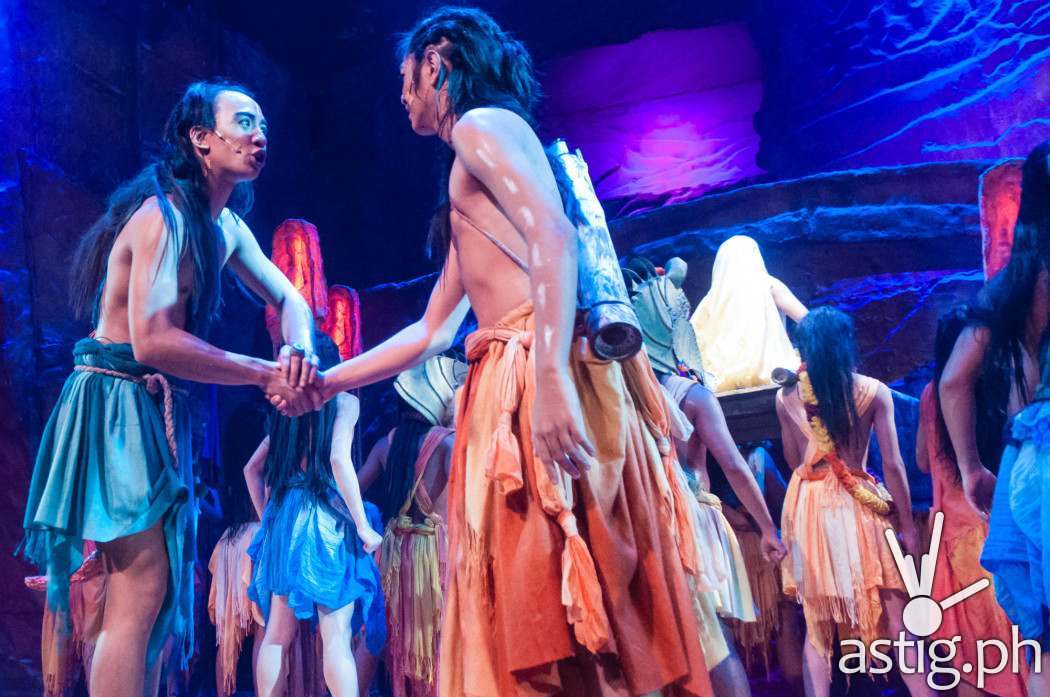I normally shy away from epics, as their complicated plots, copious amount of characters, & inherent disconnect with the contemporary does not normally appeal to one such as myself, but Dulaang UP’s reinterpretation of the ‘Mahabharata’ in the form of “Ang Nawalang Kapatid” (The Lost Sibling), has altered my opinion on the matter.
READ: Dulaang UP revives ‘Ang Nawalang Kapatid’ for a cause

Being a retelling of the tale, some aspects of the original Mahabharata were reinvisioned. In this version, the story begins when the great storyteller Vyasa summoning the god of storytelling, Ganesha, to write down the story known as the Mahabharata.
In the story, king Pandu, head of the Pandavas & husband to queen Kunti, mistakenly slays a mating pair of magical deer. The king is cursed to be barren which causes him to relinquish the throne to his younger brother, the blind King Dritarastra, head of the Kauravas & husband of queen Ghandari.
‘Ang Nawalang Kapatid’ is more 70% interpretative dance & 30% dramatic piece … the dance sequences are bold, daring, risky and full of energy …
Queen Kunti gives birth to 3 sons, Yudistira, Bhima, & Arjuna, while Queen Ghandari gives birth to Duryodhana.
Unbeknownst to them, in her youth queen Kunti has another son named Karna, placed upon her as a curse from the god Kali as punishment for her pride & arrogance. In her shame, she orders the child killed but her handmaidens’ exile him to the jungle, where he is adopted by the monkey god Hanuman.

Time passes quickly & the brothers & cousins grow into adolescence. Karna ventures into the world to fulfill his destiny. In his travels he meets Duryodhana. Their encounter begins as enemies, which transforms into mutual respect, friendship & eventually blossoming into brotherhood.
They proceed to a procession where the right to rule & the hand of the beautiful Draupadi is being contested thru archery. Both Pandavas & Kauravas are equal in skill so to decide, Draupadi is tasked to choose, & she selects Yudistira.
Defeated, Duryodhana is vulnerable to the influence of the gambler Shakuni who seeks to instill chaos. Shakuni convinces the Kaurava prince to challenge Yudistira in a game of dice. Since Shakuni is unmatched in games of chance, Yudistira will eventually gamble everything away, including his right to rule & Draupadi herself.
Everything goes according to Shakuni’s plan, but due to the intervention & mercy of Karna, he convinces Duryodhana to instead exile the Pandavas for 10 years instead of taking everything from them. Bound by his word, Yudistira leaves, vowing war upon his return.

10 years pass, & the shadow of war looms over the land. Both sides battle, but are equally matched in mortal combat. As a last resort, the Pandavas implore Krishna & the Kauravas Hanuman for godly weapons to end the conflict.
As the aggression escalates, one last ditch effort for peace is launched by Karna when his true ancestry is revealed by his mother Kunti, for fear for the life of her sons. Karna’s efforts are for naught, as the weapons annihilate everyone, proving that in war, everyone is a loser. A faint hope is sown towards the end as the princes are reborn in the never ending cycle life & reincarnation.
‘Ang Nawalang Kapatid’ is 70% interpretative dance & 30% dramatic piece, so it might appeal to those more open to other forms of performing arts & not just plays, but this does not lessen its artistic value. In fact, the intricate choreography has enhanced an otherwise tiring plot due to its length.

The dance sequences are bold, daring, risky and full of energy. When the ensemble does cartwheels, head stands, elaborate prop manipulations, one would normally assume a catastrophic failure is inevitable, but the dancers performed the steps with military precision & the grace of ballerinas.
Even when delivering dialogue, the actors pose with hand gestures reminiscent of the bas relief of Asuras & Devas in Angkor Wat, showing every detail was planned & well thought out in incorporating Hindi mythology.
The costumes are well-inspired
The dialogue, which is spoken in Filipino, was an excellent choice as a medium as it is more tonally linked with the Indian language than English. Also, it provides an air of East Asian grandiosity when spoken in its purest form.

The costumes are well-inspired. Designers were able to simulate time period based Indian attire whilst having a hint of other Southeast Asian & probably South American influences (An Indian theme that is not quite exactly Indian).
I found certain scenes too excessive though, such as the scene where everyone was writhing in mud, which I assume is symbolism for the great war that occurred. I thought that was unnecessary & added with the intention to titillate.
In contrast, I appreciate numerous scenes which utilized creativeness to represent the magical & impossible situations in the Mahabharata, which could not be done without special effects. The act where Draupadi is blessed by Lord Krishna to produce an unending Sari to avoid humiliation or when Kunti & Ghandari gives birth symbolically using the long winding cloth comes to mind.

I would recommend this play to those new to reading the Mahabharata, as it is a good introduction to the verbose epic. Having a visual representation of characters & events makes the ordeal of reading the poem described as 10 times the length of the Iliad less daunting.
Experts on the Indian literature would also take pleasure in this reimagining, as they can point out the differences between the poem & the play (e.g. There are 5 Pandava princes in the written form instead of 3 in the play, or in the poem Draupadi is married to all Pandava brothers instead of just Yudhisthira).

All in all, I applaud Dulaang UP for their endeavor, creating a performance that rivals their previous ‘Orosman at Zafira’ in terms of step arrangement, and storytelling that comes closest to interpreting the Mahabharata. This Indian epic may appear exotic & foreign but its themes of war, love, betrayal, brotherhood, family, death & rebirth transcends cultural boundaries.
Ang Nawalang Kapatid photo gallery
(function(d, s, id) { var js, fjs = d.getElementsByTagName(s)[0]; if (d.getElementById(id)) return; js = d.createElement(s); js.id = id; js.src = "//connect.facebook.net/en_US/all.js#xfbml=1"; fjs.parentNode.insertBefore(js, fjs); }(document, 'script', 'facebook-jssdk'));
[stextbox id=”astig”]Book & lyrics by Floy Quintos; original music by Ceejay Javier; direction & choreography by Dexter M. Santos. “Ang Nawalang Kapatid” runs from July 4-13, 2014 at the Wilfrido Ma. Guerrero Theater, 2nd floor Palma Hall, University of the Philippines Diliman. Tickets are priced at Php 500.00 each.[/stextbox]

